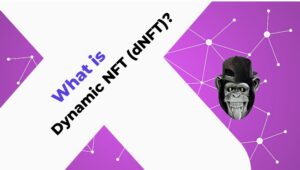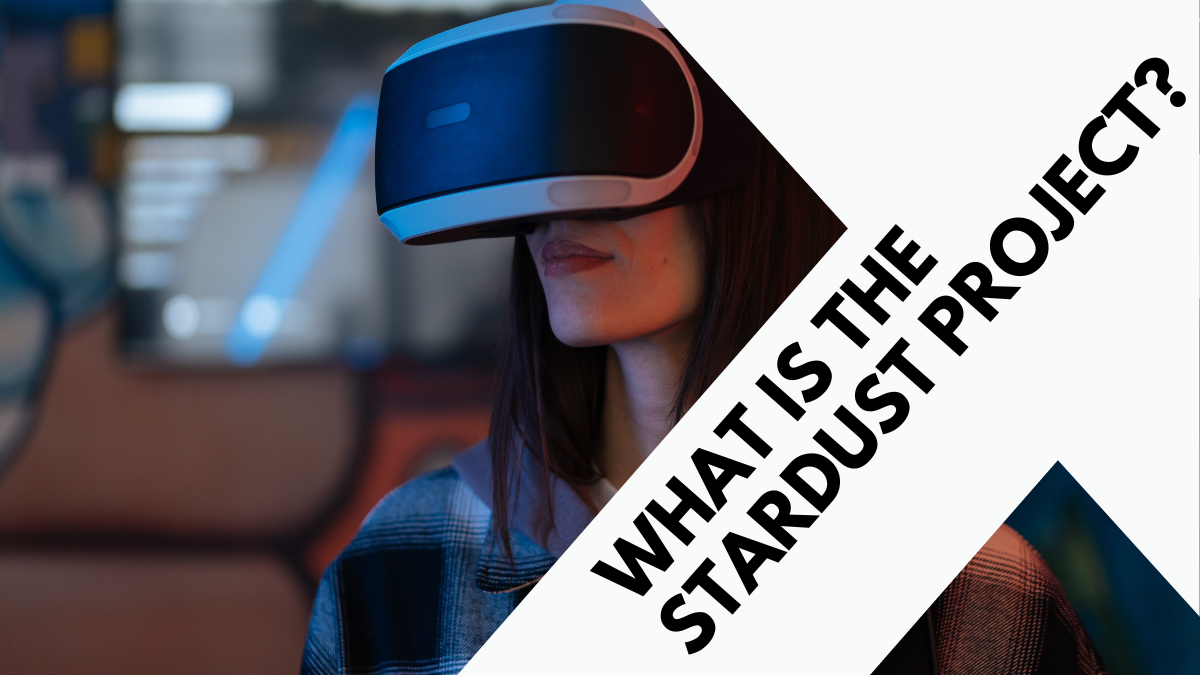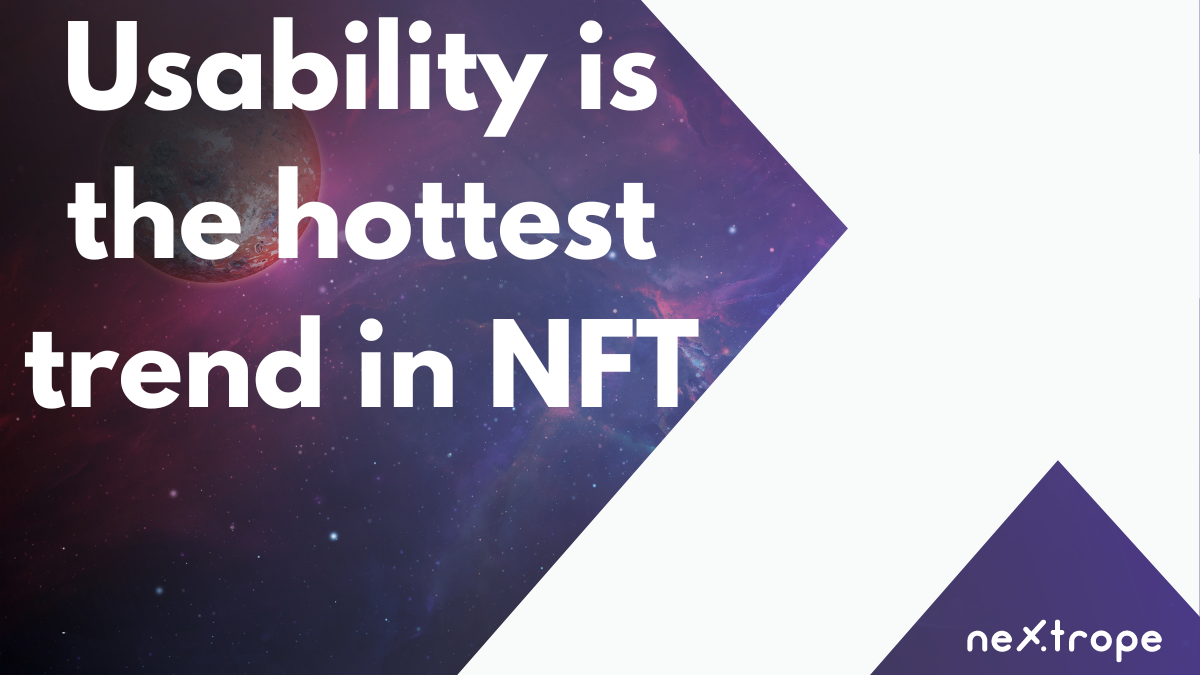Non-transferable tokens (NFTs) are becoming mainstream after widespread adoption in the Web3 community, attracting media attention from around the world and several prominent athletes and public figures launching their collectible items. As a result, NFTs have become one of blockchain technology's most publicly visible applications. The next step in the evolution of non-exchangeable tokens has just begun. Dynamic NFTs (dNFTs) expand the design space because they can adapt and change in response to external events and data. In this article, we will discuss dNFTs, how they can take NFTs to the next level, and current and potential dNFT use cases.
NFT vs. dNFT
Static NFT transactions are non-exchangeable tokens and cannot be changed or modified. Once created, they exist on the blockchain as permanent, immutable records. These NFTs are often used to represent digital assets not intended to be changed or exchanged, such as works of art, collectibles, or digital identifiers. They can also be used to permanently store data in a blockchain, such as a decentralized database. Static NFTs have several advantages over dynamic ones. First, they are more secure because they cannot be changed once created. Second, they are more efficient and compatible with existing systems and protocols. As for shortcomings, however, they certainly exist as well. One is that static NFTs can't be updated or changed, so if you need to add new information, you're only left with creating a new NFT. This makes static NFTs less flexible than dynamic ones, as their very names indicate. Another disadvantage is that static NFTs are not compatible with some smart contract platforms. This limits the types of applications that can be built using static NFTs. But even with these limitations, static NFTs are still the most popular type of NFT and are used in many applications. Their security, performance, and compatibility make them a perfect fit for various applications.
Benefits of static NFTs
Static NFTs have many advantages over dynamic NFTs.
First, they are more efficient in terms of storage and bandwidth requirements. This is because static NFTs only need to be saved once, no matter how many times they are exchanged or sold. In contrast, dynamic NFTs must be held every time the owner changes.
Second, static NFTs are more accessible to verify than dynamic NFTs. This is because all the information for the former is contained in a single file. In contrast, dynamic NFTs may have multiple related files, complicating verification.
Third, static NFTs are more resistant to fraud and forgery. Creating fake static NFTs is much more complex than forging dynamic NFTs.
Finally, static NFTs offer more flexibility in how they can be used. For example, they can be used as collateral for loans or as a form of digital property that can be shared.
Overall, static NFTs have many advantages over dynamic NFTs. They are much more efficient in terms of storage and bandwidth requirements. They are also easier to verify, more resistant to fraud and forgery, and offer more flexibility in their use.
Dynamic NFT (dNFT) transactions
Dynamic NFTs or dNFTs are tokens that can be updated or changed after they are created. They are, therefore, different from static NFT transactions, which cannot be modified. dNFTs are helpful in situations where the data associated with an NFT may need to be updated over time, such as digital assets representing real-world objects (e.g., artwork, cars, etc.) that may change ownership or location. Using dNFT, new asset holders can update their tokens to reflect the change in the user.
Benefits of dynamic NFT transactions
Dynamic NFTs have many advantages over traditional NFTs, including:
Increased Holder Engagement - Dynamic NFTs can help you share content or products. By offering something that is constantly changing or evolving, you can keep people coming back for more. This can take the form of new and exciting ways to do new challenges, collect rewards or interact with the content provided.
Greater immersion: Dynamic NFTs also have the potential to provide users with greater immersion. When people feel that they are constantly discovering new things, it can make the experience more enjoyable and memorable. This allows people to spend more time on your content and invest more in what you offer.
More loyalty - people are more likely to become loyal fans if they engage with your content and find new ways to enjoy it.
More monetization opportunities: if you can successfully attract users with dynamic NFTs, additional monetization opportunities may arise. This could come from paying for premium content, rewards, or spending more time on the site or app.
Greater flexibility: Dynamic NFTs also provide more excellent content creation and distribution flexibility. You can gradually make it available with new challenges or rewards if you have an extensive library of content. This will help keep people interested and coming back for more and give you time to create new opportunities.
If your content is engaging and appealing to people, it is more likely to be shared by participants with their friends and family. This can increase the popularity and even organic growth of your business.
Better analytics: using dNFT can also provide better analytics and insights into how people interact with your content. This can help you optimize your offerings and make changes based on user feedback. It can also help you identify areas of potential monetization or new content ideas.
Increase exposure: Dynamic NFTs can also help increase the popularity of your company or brand. People consistently engaging with your content can lead to more whisper promotion and potential customers.
Increased fan engagement: You may see increased attention if you successfully attract followers through dynamic NFTs. This can include people sharing your content, giving feedback, and even becoming paying customers.
More opportunities for innovation - dNFTs also provide more opportunities for innovation and creativity. You can keep people interested and coming back for more by constantly changing and evolving. This can lead to new ideas and ways to improve your product.
There are many potential benefits to using dynamic NFTs, but remember that they may not apply in all situations. If you are considering using them, carefully weigh the pros and cons to ensure they suit your company or brand.
Potential use cases for dNFT
NFT metadata names tokens, assign attributes, and provide links to files. While tokenID provides a persistent identifier for a verifiable property, metadata is the essence of NFT - it contains the elements that make it worthwhile. Generative NFT designs often have a variety of features, some of which are rarer than others. These features are placed in the NFT metadata next to the IPFS link of the image or video corresponding to the NFT feature. In dNFT, these features change depending on external conditions. This feature is helpful for character development in blockchain-based games. When you first start playing with a playable NFT character, the basic statistics of the NFT are reflected in its metadata. The metadata changes as the player's level increase to reflect the character's development.
Use cases for dynamic NFT
Earlier in this article, we mentioned that in-game characters are a potential use case for dynamic NFTs. However, this is just an example. Therefore, we believe two additional use cases should be presented in this section to illustrate the benefits of dynamic NFTs.
Sports card dNFT
Sports card - we will use the card of a football player as an example. Let's assume we have a dynamic NFT representing a real soccer player. NFTs can store information such as speed, agility, power, goals, assists, etc., in the token's metadata. However, as the season progresses, these statistics change; for example, a player may score several goals. This means that dynamic NFTs can choose to retrieve data about a player's progress from outside the chain and update the metadata accordingly. This is not possible with static NFTs because the metadata will be persistent, from the moment someone creates a token.
Real estate and dNFTs
The second example is real estate - in this case, we will use a house. Let's assume that we have a dynamic NFT representing this type of investment. When tokenizing tangible assets, it is advantageous to be able to change the metrics usually required.
In this example, we want the NFT metadata to reflect specific changes in the property that may be of interest to prospective buyers. For instance, they should show maintenance history, age, market value, past sales, etc. Therefore, when tokenizing physical assets such as real estate, it is advantageous to be able to update and change the token metadata.
Summary
As you can see, dNFTs are the answer to all the limitations of classic NFTs. Their liquidity and change over time make modern technologies quickly adapt to the real world. No wonder the above technology is developing faster and faster!
 en
en  pl
pl 











